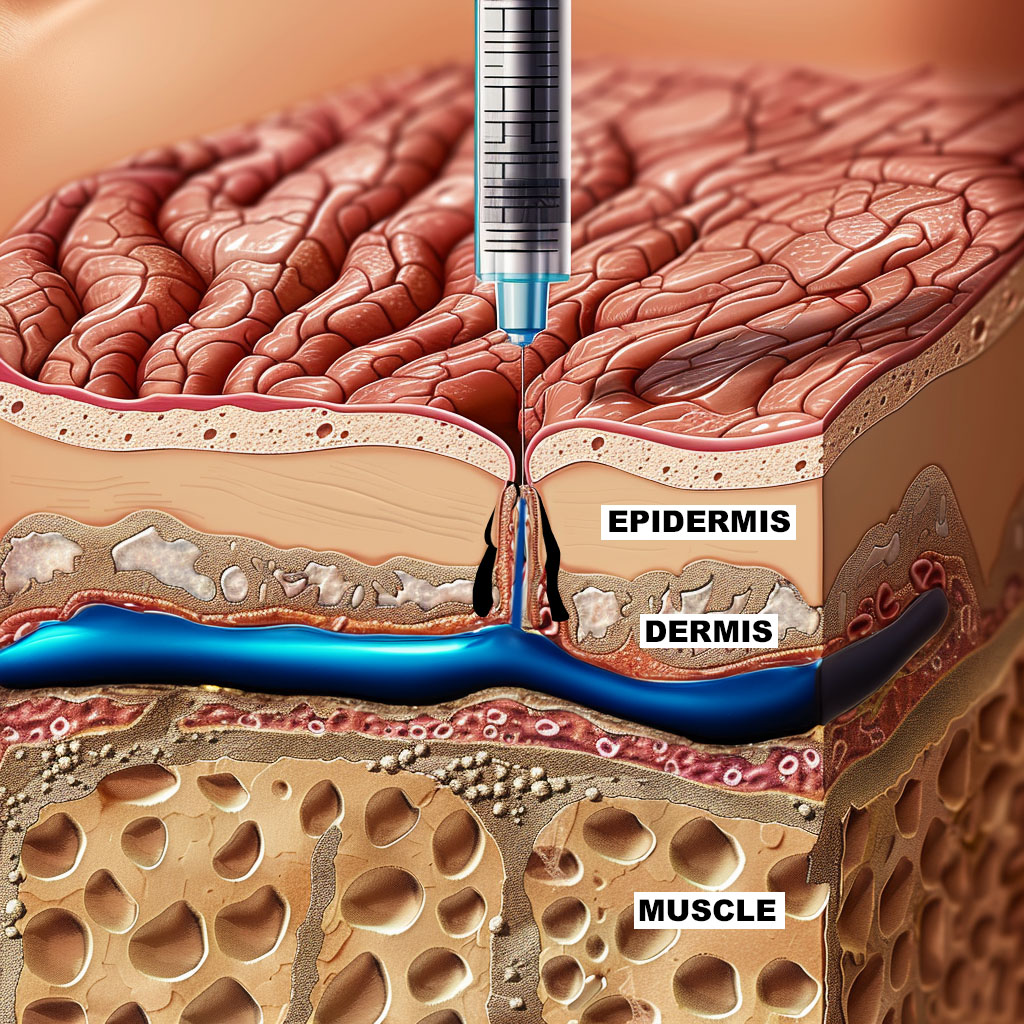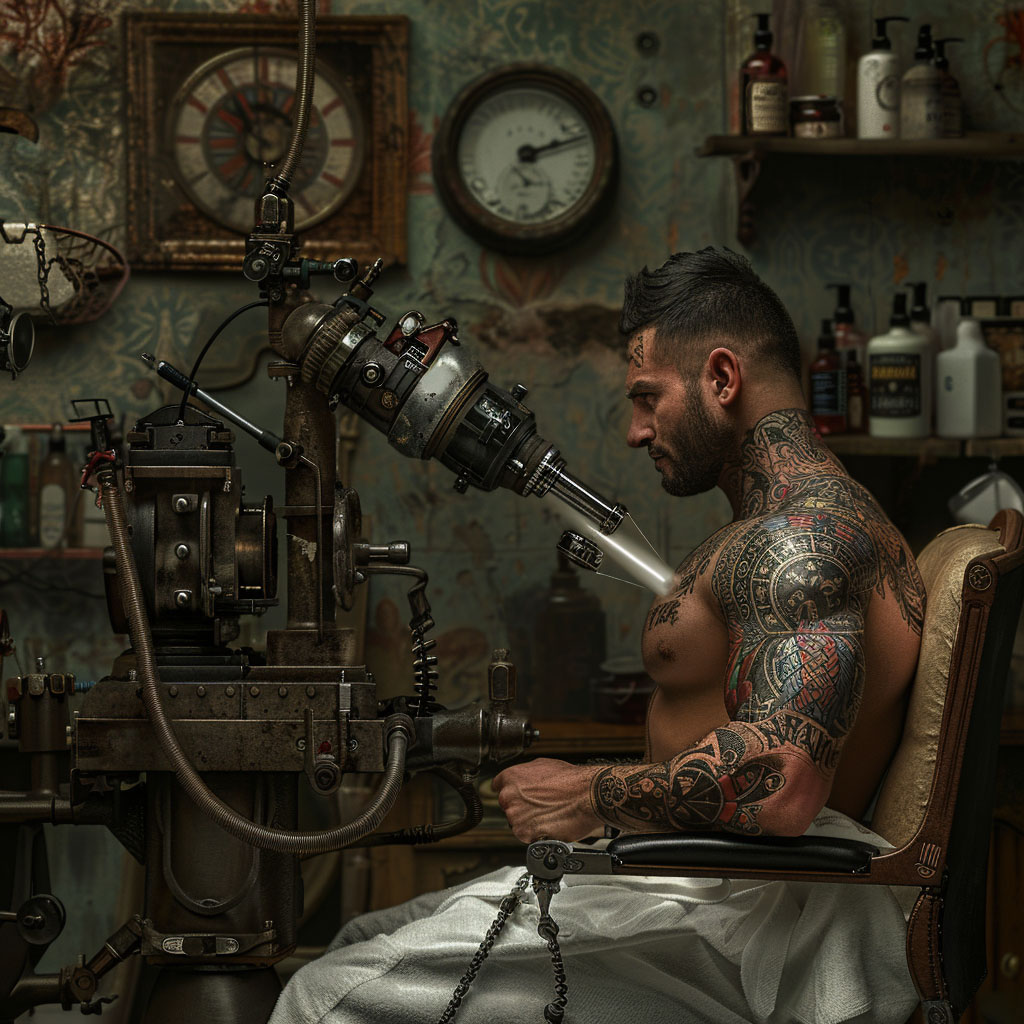Tattoos have inked their way deep into cultures around the globe, evolving from tribal symbols to modern expressions of art, memories, and sometimes, regrettable decisions made on a night too fun to remember. They’re not just for sailors, rock stars, or your rebellious cousin anymore; they’ve etched a place in the mainstream, proudly worn by people from all walks of life. This article isn’t your typical history lesson on tattoos but a guide for the intrigued, the brave souls considering marking their journey on their skin. We’re diving into the nitty-gritty – answering those burning questions that keep you up at night, with a sprinkle of humor and a dash of sarcasm, because, let’s face it, discussing how a piece of ink becomes a lifelong companion is bound to get a little cheeky.
The Permanent Mark: How Tattoos Stick Around
Ever wondered why a tattoo can outlast a marriage, a job, or even your commitment to that New Year’s resolution? It’s not just the universe playing a cruel joke. The secret lies beneath the surface – quite literally. When a tattoo artist punctures your skin with their needle (or needles, for the ambitious among us), they’re not just doodling on your epidermis. No, they’re injecting ink into the dermis, the layer of skin that doesn’t flake away like your ambitions to hit the gym. This layer is stable, making your tattoo as permanent as the embarrassment of that karaoke night.
But why doesn’t your body just deal with the ink like it does with splinters or your dignity after a fall? Well, your immune system does give it a shot, sending cells to the tattoo site to gobble up the foreign ink particles. But here’s the kicker – some ink particles are too big for these cells to handle. So, instead of clearing away the ink, these cells become part of your tattoo, stationed there like bouncers at a club, keeping your ink in place.

This interplay between the ink and your immune system is why tattoos stick around. They’re not just skin deep; they’re a battle scar from a fight your body didn’t quite win. And the irony? In a world where everything is temporary, from your job to your hairline, tattoos are the one constant, a reminder that some decisions are indeed forever. So, next time you’re contemplating that dragon tattoo, remember: it’s not just art; it’s a commitment more permanent than most things in life – except maybe that bad tattoo decision, which, ironically, will stick around to remind you of the impermanence of everything else.
Ink and Your Health: Can Tattoos Cause Cancer?
In the grand tradition of worrying about everything that could possibly go wrong with our bodies, the question arises: can slathering your skin in ink lead you down the path to cancer? Before you start envisioning your tattoo as a ticking time bomb, let’s dive into what the science says. Spoiler alert: it’s not as dire as your midnight WebMD searches might suggest.

Current research into tattoo inks and cancer is, like your attempt to learn guitar, ongoing and somewhat inconclusive. Most studies haven’t found a direct link between tattoos and an increased risk of cancer. However, some inks contain compounds that, in large amounts, have been associated with cancer in animals. But before you panic, remember: the quantity of these compounds in tattoo inks is typically much lower than the amounts found to be harmful in lab animals. It’s a bit like comparing the health risks of drinking a glass of wine to downing the entire vineyard.
The real kicker is the regulation of tattoo inks, which is about as consistent as your commitment to a low-carb diet. Different countries have different standards, and some inks have been found to contain contaminants that you wouldn’t want anywhere near your skin. This is where the importance of going to reputable artists comes into play. A good artist uses high-quality inks and maintains rigorous hygiene standards, reducing the risk of any adverse effects – aside from your mom’s disapproval.

So, while the link between tattoos and cancer remains a bit of a gray area, it’s probably not the ink that’ll get you. If we’re talking about health risks, your weekend binge-watching marathons or that diet you proudly describe as ‘fast food connoisseur’ are likely more hazardous to your health. In the grand scheme of things, worrying about your tattoo causing cancer should probably be lower on your list than, say, the fact that your idea of exercise is walking to the fridge during commercials.
The Gift of Life: Can Tattooed People Donate Blood?
The myth that tattooed individuals can’t donate blood sticks around like that friend who can’t take a hint when the party’s over. But here’s the truth, ready to clear the air like someone finally opening a window in that scenario. Yes, tattooed folks can indeed donate blood, but there are a few caveats, much like there are to a “free” vacation.
Health organizations, such as the American Red Cross, have guidelines that are surprisingly accommodating for those of us sporting ink. The main stipulation is a waiting period post-tattooing – typically about four months in many countries. This grace period is not because your blood has suddenly turned into a psychedelic ink potion but is a precautionary measure to ensure no infections were acquired during the tattooing process. Because, as we all know, not all tattoo parlors are created equal, and the risk of diseases like hepatitis is real if the equipment used is not properly sterilized.

So, if your tattoo was applied in a state-regulated and licensed facility, where hygiene is as revered as the sacred art of tattooing itself, you’re pretty much good to go after the waiting period. It’s their way of ensuring your generous blood donation doesn’t come with unwanted “extras.”
Here’s a quip for the road: While your new ink might not be to everyone’s taste, rest assured, your blood certainly is. So, roll up your sleeves (and maybe flaunt that tattoo while you’re at it) and show the world that being inked doesn’t mean you can’t be a lifesaver. After all, your blood could be the most universally appealing thing about you, especially if your choice of tattoos leans towards the controversial or the “what was I thinking?” variety.
Needle-Free Inking: Is It Possible?
For many, the allure of tattoos is tempered by one daunting hurdle: needles. Yes, those sharp, pointy instruments of art (and pain) that deliver ink into the skin. But what if you could get inked without the poke? Enter the realm of needle-free tattooing – a concept as sought after as a painless dentist visit.
Currently, the most promising alternative to traditional needle tattoos comes from the field of medical technology, where jet injection systems, designed for delivering medication without needles, hint at a future where tattoos might be applied similarly. These systems use a high-pressure stream to deliver ink into the dermis without a needle ever breaking the skin. Sounds like science fiction, right? Well, it’s not quite ready for your local tattoo parlor yet, but research is ongoing.

The big questions around needle-free tattooing are about pain, permanence, and safety. While the idea suggests a less painful experience, anyone who’s endured a jet injector for vaccinations might argue otherwise – it’s different, but not necessarily a tickle fight. As for permanence and safety, those are still up in the air. The precision and depth of ink placement that a skilled artist achieves with a needle might be challenging to replicate without one.
This pursuit of needle-free tattooing reflects just how far we’ll go to avoid discomfort, even when chasing something we deeply desire. It’s a testament to human ingenuity and, perhaps, our universal dislike for being poked and prodded. While the technology isn’t there yet, the day might come when getting a tattoo is as simple as getting sprayed with ink – a prospect that’s both intriguing and a little bit sci-fi. Until then, we brave the needle, because beauty, as they say, requires a bit of pain. Or in this case, a willingness to endure a few hours of being a human pincushion.
Erasing Mistakes: How Does Tattoo Removal Work?
Ever wish you could hit the undo button on certain life decisions? Maybe it’s that impulsive tattoo from your college days, proclaiming love to what’s-her-name, or perhaps an “inspirational” quote that turned out to be less profound and more cringe as the years passed. Enter the modern marvel of tattoo removal technology, specifically laser tattoo removal, acting as the closest thing we have to a real-life ctrl+z for skin art.

Laser tattoo removal works by sending concentrated light beams into the tattoo, which break up the ink particles into smaller fragments. These tiny ink fragments are then easier for your body to absorb and eliminate. It’s a bit like using a really sophisticated eraser that instead of rubber, uses light pulses to make your past indiscretions fade away. But not all tattoos are created equal, nor are they removed equally. Different ink colors respond to different laser wavelengths. Black and dark colors are usually the easiest to remove, while light blues and greens can be as stubborn as your refusal to ask for directions.
The number of sessions required can vary dramatically, depending on the size, color, and age of the tattoo, as well as how deeply the ink was embedded. You could be looking at anywhere from a handful to a dozen sessions, spread out over months, to fully erase a tattoo. And let’s talk about the elephant in the room: yes, it hurts. Some say it’s like being snapped with a rubber band, while others claim it’s more intense. Pain tolerance varies, but so does the satisfaction of erasing a mistake.
As for scarring and side effects, they’re relatively rare, but the risk is there. Choosing a reputable, experienced professional for the removal process is as crucial as it was for getting the tattoo in the first place. If only we could apply the same laser precision to erase other questionable choices in life, like mullets or that time you thought skinny jeans were a good idea.

So, you’ve been on a whirlwind tour of the tattooing world, from getting inked to possibly getting un-inked. The key takeaway? Do your homework. Whether it’s choosing a reputable artist, deciding on a design, or even contemplating removal, information is your best friend (next to a good numbing cream, perhaps).
As we wrap up this ink-stained journey, remember that despite our jests and jabs, getting a tattoo is a significant decision. It’s a piece of art that you’ll carry with you, a story etched in your skin. So, make it count. Go in armed with knowledge, a sense of humor, and maybe a slight tolerance for pain. After all, in the grand canvas of life, your tattoo is one brushstroke that you have control over—so paint wisely. And hey, if all else fails, at least now you know that with a bit of light (laser light, that is), some of those brushstrokes can be reworked or erased. Just like life, it’s all about evolving, learning, and occasionally, lasering away the past.
| TATTOO FACTS AND FIGURES |
| Tattoo Prevalence: Approximately 30% of Americans have at least one tattoo, highlighting the mainstream acceptance and popularity of tattoos in contemporary culture. |
| Tattoo Regret: A survey found that about 23% of people with tattoos regret getting at least one of them, underscoring the importance of thoughtful consideration before getting inked. |
| Tattoo Regret: A survey found that about 23% of people with tattoos regret getting at least one of them, underscoring the importance of thoughtful consideration before getting inked. |
| Ink Safety Concerns: A European Commission report noted that up to 60% of the colorants used in tattoo inks in Europe are not approved for cosmetic use, indicating potential health risks and the importance of ink regulation. |
| Blood Donation Eligibility: According to the American Red Cross, individuals can donate blood even if they have tattoos, provided the tattoo was applied by a state-regulated entity using sterile needles and ink that is not reused, though restrictions can vary by state and country. |
















